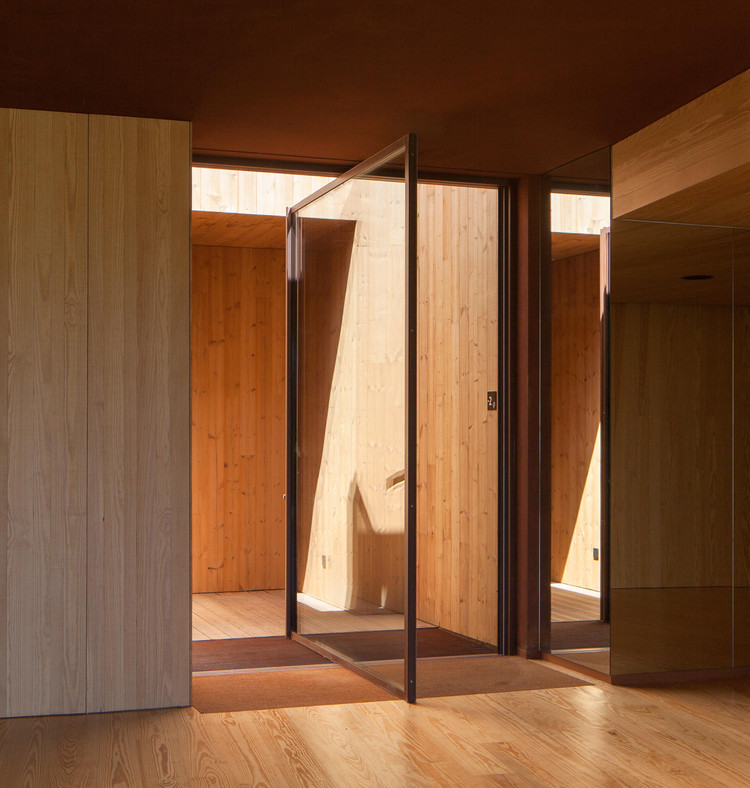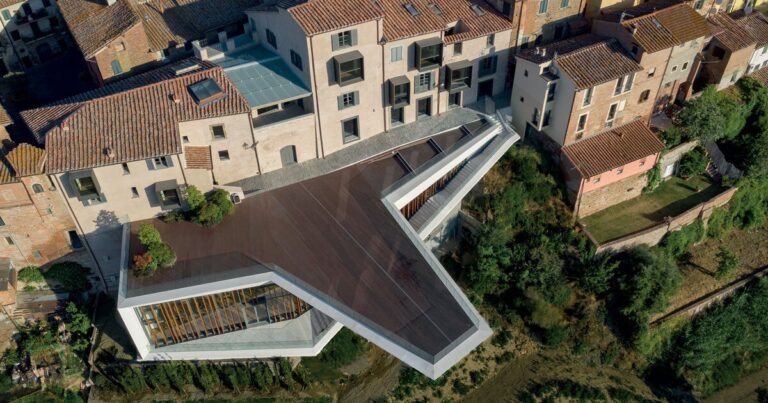Go Big or Go Home: Oversized Doors in Residential Interiors
Go Big or Go Home: Oversized Doors in Residential Interiors

Interior doors serve multiple purposes in homes, such as providing security and privacy, separating spaces and buffering noise. But besides these obvious functions, they can also set the tone and enhance a room’s aesthetics with their beauty, becoming powerful design features by themselves. They certainly should not be taken lightly when designing any interior space. Considering this impact, architects must take every factor into account when choosing a door, including color, material, style and swinging motion. Dimensions are also important, but tend to be standard as they are limited by the size of the door frame. Usually, they don’t exceed 80 inches (or 203 cm) in height and range from 24 to 36 inches (70 to 90 cm) in width. Recently, however, this has taken a turn in modern design.
With contemporary houses prioritizing large hallways and tall ceilings, oversized doors that drastically exceed those common dimensions are especially in trend. Although they are generally customized, require a bigger investment and are commonly associated to luxury, their ability to make a bold statement is unmatched. They automatically draw users’ attention and accentuate a building’s height, making any space (luxury or not) seem grand and elegant. Without a doubt, these dramatic floor-to-ceiling doors will continue their dominance in the architectural marketplace.

Nonetheless, it’s not all about creating a stylish impact; oversized interior doors can be extremely functional compared to smaller, narrower alternatives. They provide larger access points that can be useful for entertaining or for moving large furnishings. And when opened (or when closed if made of glass), this bigger space promotes an open, airy feeling that can be very appealing in modern designs where spaciousness is highly appreciated. At the same time, this also implies greater exposure to natural light and a better visual and physical connection between spaces.
Versatile material possibilities
Like any door, oversized doors can be made from countless materials – but in greater abundance and bigger formats. A big glass door, for instance, often needs a large, custom-made glass panel, whereas a wooden door may require a heavier board of non-standard dimensions.
Depending on the chosen material and finish, different styles can be achieved. Wood, for example, is defined by a warm, nature-inspired look that can be rustic or sleek. Although it expands and contracts with temperature, wooden doors can be very durable with advanced manufacture methods and regular maintenance. On the other hand, glass and fiberglass is great for views and letting sunlight in while still providing privacy. Often paired with a steel frame, these doors can be colored, frosted or reflecting.

Known for its cost-effectiveness and versatility, steel offers good insulation, design flexibility and more durability than wood and glass, resisting to various climatic conditions. Apart from all of these widely used materials, interior oversized doors can also be made, among others, of aluminum, stone, marble and leather, all of which can be combined in practically endless configurations.

A selection of oversized doors with a strong character
Apart from their material properties, oversized doors can be classified into four main groups according to their type of opening motion: pivot, sliding, single-hinged and double. To inspire homeowners and architects, below we explore these through a selection of beautiful oversized doors – of diverse material compositions – that certainly make a statement in modern residential interiors. All of these can be found in Architonic’s ‘Internal doors’ section.
Pivot
Rotating on a vertical axis with nearly invisible hardware, these swinging doors stand out because of their clean lines, modern style and smooth movement. When combined with oversized dimensions, this elegant aesthetic is enhanced, evoking a greatness that is unparalleled compared to other alternatives.
Big White Pivot Door / FritsJurgens


Steel Pivoting Door / FritsJurgens


Wooden Pivot Door / FritsJurgens

For more examples of this typology, visit the ‘Pivot doors’ product category in Architonic.
Sliding
Characterized by their simple sideways motion, sliding oversized doors provide a grand transition between spaces while saving space, being ideal for cramped spaces with tall ceilings. Since these are naturally heavier, it is crucial for the door track to remain in good condition to ensure smooth movement, which implies regular maintenance from dirt, moisture or normal wear and tear.





For more examples of this typology, visit the ‘Sliding doors’ product category in Architonic.
Single-hinged
In regular hinged doors, the hinges are attached to the side of the door and the adjacent wall. When these are oversized, however, they are no longer regular, adopting a unique, strong character than sets them apart from standard sized options. Although oversized single-hinged doors usually open inward, others can open outward as well. They can also use traditional flat hinges or flush hinges that, unlike the former, allow doors to sit completely flush against the frame instead of remaining in the regular offset position.




Interior safety door with concealed hinges / Oikos – Architetture d’ingresso

For more examples of this typology, visit the ‘Hinged doors’ product category in Architonic.
Double
If one oversized door is not enough, double doors are the answer. Commonly known as French doors, these are composed of a pair of single doors – which can be pivot or regular-hinged doors – that open away from each other, being useful for larger access points and implying greater exposure to light and views when opened. Essentially, double oversized doors offer double the impact, maximizing the feeling of spaciousness in any room.
Bod’or Pivoting Entrance / FritsJurgens


Infinito 10 Vertical Pivot Door / Linvisibile


Filo 10 Vertical Pivot Door / Linvisibile

For more examples of this typology, visit the ‘Hinged doors’ or ‘Pivot doors’ product category in Architonic.

